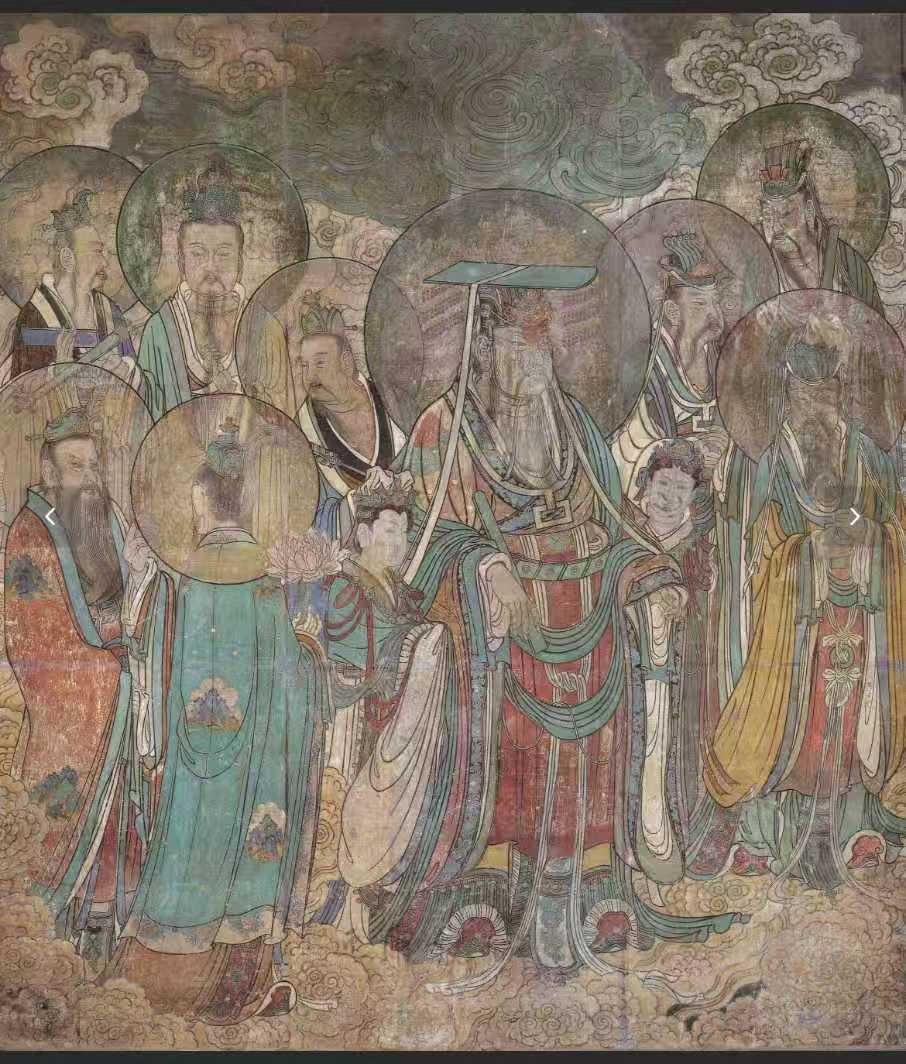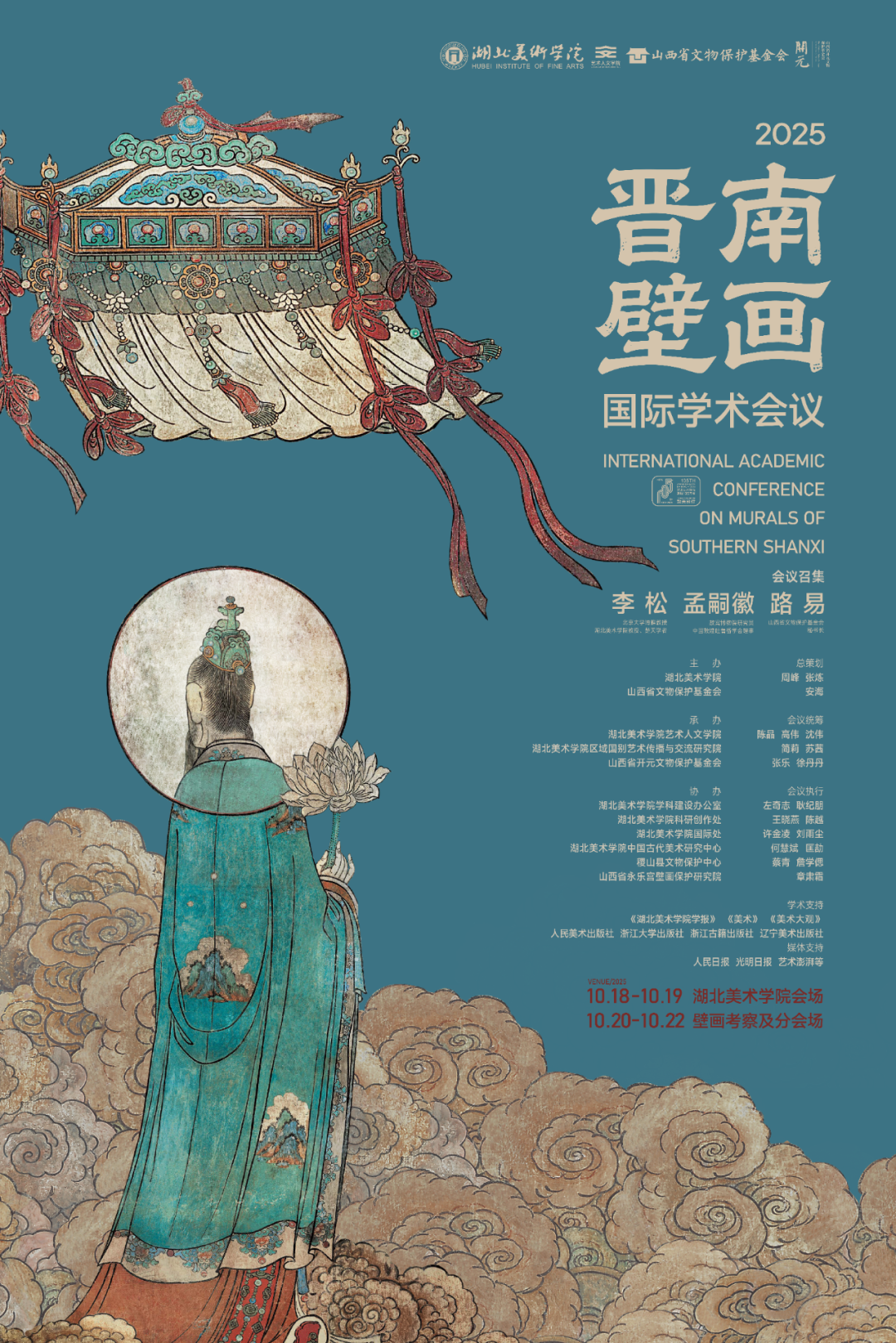
Most of the murals in southern Shanxi are masterpieces from the Five Dynasties, Song Dynasty, Yuan Dynasty and Ming Dynasty. They are not only precious cultural heritage of mankind, but also core samples for studying the history of Chinese murals. They occupy an important position in the history of Chinese art.
The Paper learned that on October 18, the "2025 International Academic Conference on Southern Shanxi Murals" opened at the Hubei Academy of Fine Arts. Dozens of experts and scholars from research institutions at home and abroad will conduct in-depth discussions on core issues such as the historical review, image interpretation, artistic value, skill inheritance, and cultural relics protection of Southern Shanxi murals.

Shanxi Yongle Palace murals
Southern Shanxi murals mainly refer to the precious murals left in ancient temples and tombs in southern Shanxi. They span multiple dynasties including the Five Dynasties, Song, Jin, Yuan, Ming and Qing dynasties. With grand composition, vivid characters and rich colors, they record and present ancient China's religious beliefs, rituals and customs, social life and aesthetic trends. They are important physical materials for studying the history of ancient Chinese art, customs, beliefs and rituals, and social culture.

Shanxi Yongle Palace murals (replica)
In terms of art, the murals in southern Shanxi inherit the traditions of the Tang and Song dynasties and usher in the styles of the Ming and Qing dynasties. They have vigorous lines and rich colors, combining court norms with folk interest. They show the unique artistic traditions and painting team system of the Shanxi region, and reflect the profound tradition of Central Plains painting.
Li Song, one of the academic conveners of the conference and a Boya Chair Professor at Peking University, will give a keynote speech on "Rethinking the Iconography of the Sanqing Hall in the Yongle Palace" during the conference.

The scene of "2025 Jinnan Mural International Academic Conference"
Li Song explained that Mr. Wang Xun's research on the deities in the Sanqing Hall of the Yongle Palace, spanning 60 years, is undoubtedly groundbreaking and worthy of respect, but also suffers from limitations due to the limitations of the times. The breakthrough of this research lies in re-examining the fundamental question of whether the murals prioritize the left or the right. This directly impacts the arrangement of the main deities. It can be said that this work has "replaced the identity cards" for most of the deities. This work represents a significant update and deepening of the iconographic system of the Sanqing Hall murals.
In his opening speech, Zhang Lian, Vice President of the Hubei Institute of Fine Arts, stated that the murals of southern Shanxi, one of the "twin peaks" of ancient Chinese mural art alongside the Mogao Grottoes in Dunhuang, possess a value and charm that transcends time and space, remaining ever more enduring. This conference, focusing on the "Preservation, Research, and Heritage of Southern Shanxi Murals," brought together leading experts and scholars from around the world, as well as young and emerging professionals, to jointly explore and build an academic community dedicated to the study of ancient art relics. This conference will advance the preservation and research of southern Shanxi murals to a deeper and broader level.

Murals of Qinglong Temple in Jishan, Shanxi
An Hai, deputy director of the Shanxi Institute of Conservation of Ancient Architecture and Painted Sculptures and Murals, introduced on the spot that the murals in southern Shanxi are numerous, rich in content, and unique in typicality. They have extremely high historical, cultural and artistic value. There are still many secrets worth further exploration of the murals in southern Shanxi. "At present, it is particularly necessary to further promote the development of multidisciplinary research, strengthen academic exchanges and cooperation at home and abroad, build consensus from an international perspective, and enhance the attention and protection of the painted sculptures and murals of ancient buildings in Shanxi."
Su Qian, Secretary-General of the Shanxi Kaiyuan Cultural Relics Protection Foundation, addressed the academic topic of how southern Shanxi murals can maintain their youthful brilliance and provide cultural and spiritual nourishment, thus initiating a cultural dialogue that transcends geography and connects the past and present. This is our shared historical responsibility and the original aspiration and mission of the Shanxi Kaiyuan Cultural Relics Protection Foundation. We look forward to all parties and experts and scholars injecting new momentum into innovative research on Shanxi murals, and contributing to the preservation and inheritance of Shanxi's cultural relics, ancient buildings, and cultural heritage.
According to the organizers, the experts participating in the conference have already led relevant research, laying a solid foundation for the study of Shanxi's cultural heritage. This conference, focusing on the study of Shanxi murals, advocates for the exchange of diverse academic perspectives, unites all sectors in the protection of cultural heritage, and contributes to the inheritance and development of China's cultural heritage, becoming a key component in expanding the international influence of Chinese culture.

The scene of "2025 Jinnan Mural International Academic Conference"

Poster for the 2025 Jinnan Mural International Academic Conference
The conference, hosted by the Hubei Institute of Fine Arts and the Shanxi Provincial Cultural Relics Protection Foundation, will focus on the history and cultural dissemination of murals in southern Shanxi from October 18th to 21st in Wuhan, Hubei, and Shanxi.